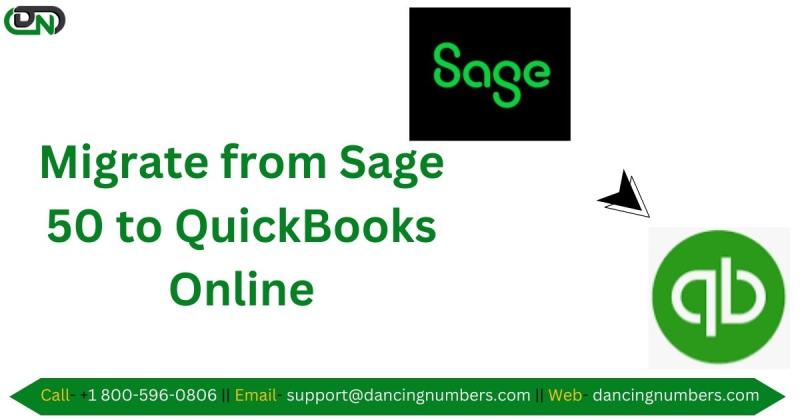What Sage 50 Data We Import to QuickBooks Online

Migrating financial data from Sage 50 to QuickBooks Online (QBO) can be a crucial step for businesses looking to streamline their accounting processes and leverage the benefits of a cloud-based system. Understanding what data can be imported into QBO and how it aligns with your financial operations is essential for a smooth transition.
What Sage 50 Data We Import to QuickBooks Online
Here’s a comprehensive overview of the Sage 50 data you can import to QuickBooks Online.
1. Customer Information
One of the first data sets you’ll want to import is your customer information. This includes:
- Customer Names and Contact Details: Basic details such as names, addresses, phone numbers, and email addresses.
- Customer Balances: Outstanding balances and credit limits.
- Customer Payment Terms: Payment terms and conditions associated with each customer.
2. Vendor Information
Just like with customer data, you'll need to import vendor information to ensure that your accounts payable functions correctly. This includes:
- Vendor Names and Contact Information: Similar to customer details, this includes names, addresses, and contact details.
- Vendor Balances: Any outstanding amounts owed to vendors.
- Vendor Payment Terms: Terms and conditions for payments to vendors.
3. Chart of Accounts
The Chart of Accounts (COA) is a fundamental element of your accounting system. When migrating:
- Account Names and Types: Import account names and their corresponding types (e.g., asset, liability, expense, revenue).
- Account Balances: Opening balances for each account as of the migration date.
- Sub-Accounts: Ensure sub-accounts are accurately reflected under their parent accounts.
4. Bank and Credit Card Accounts
To maintain financial continuity, you’ll need to import:
- Bank Account Details: Include bank account names, numbers, and opening balances.
- Credit Card Accounts: Credit card account details and balances.
- Historical Transactions: Import past transactions if needed for accurate financial reporting.
5. Invoices and Sales Transactions
Accurate financial records are crucial for ongoing business operations. Import:
- Open Invoices: Outstanding invoices that customers owe.
- Sales Transactions: Historical sales transactions to maintain a complete sales history.
- Payment Receipts: Record of payments received against invoices.
6. Bills and Expense Transactions
For comprehensive accounts payable management:
- Open Bills: Outstanding bills from vendors.
- Expense Transactions: Historical expenses recorded in Sage 50, including dates, amounts, and expense categories.
7. Inventory Data
If you manage inventory:
- Inventory Items: Import details of inventory items, including names, descriptions, and quantities.
- Inventory Valuation: Opening inventory balances and valuation.
8. Payroll Data
For accurate payroll processing:
- Employee Details: Names, addresses, and pay rates.
- Payroll History: Historical payroll data to ensure continuity in employee records.
9. Budgets
If you use budgets:
- Budget Data: Import budgeted amounts for different accounts or departments to maintain budgetary control.
10. Custom Fields
If you have custom fields in Sage 50:
- Custom Data: Transfer any custom fields or data specific to your business needs that are used in Sage 50.
By understanding and carefully managing these data sets, you can ensure a smooth and efficient transition from Sage 50 to QuickBooks Online, setting the stage for more streamlined and effective financial management in the future.
Post Your Ad Here

Comments